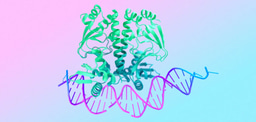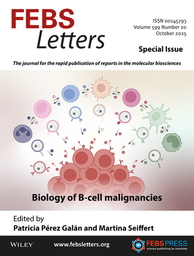Accurate detection of nutrients in food: the future of farming?

Awareness about the importance of eating healthy has increased in recent years, with an increased number of people adopting a healthy lifestyle and opting for a wide variety of diets. In most of those diets, a lot of focus is aimed at increasing your nutrient intake by consuming more vegetables and fruits. However, do we even know the nutrient content in the food products we consume? How much do we need? What is the effect of processing our food? Should we boil our vegetables or steam them? How do nutrients affect our health?
The project Food Screening EMR, a cross-border consortium led by Maastricht University, will try to provide an answer to these questions. One of the major bottlenecks in gaining insights into the nutrient content of various food products is the unavailability of a technology that can determine the concentration of, for example, vitamins in food, in a fast and low-cost manner. Currently, this involves sending food samples to a lab for analysis, a time-consuming and expensive process. As a result, the vitamin content of food products is mathematically approached, by multiplying the weight of the product by the average vitamin content. This makes it impossible for consumers to know how many vitamins they actually consume. Likewise, farmers that want to create a new spinach brand that contains more folate, have no means of assessing if their crops actually contain more folate, let alone claim on their packaging that their crops can contribute to the prevention of cardiovascular diseases.
Breaking the mold with innovation
The consortium aims to address this problem by developing a handheld color sensor for nutrients. The technology is based on so-called molecularly imprinted polymers (MIPs). These synthetic receptors can be made for virtually any target by basically building a polymeric mold around a target molecule of interest. Upon extraction of the target, nanocavities are left behind in the polymer that match the target in size and shape but also in the distribution of functional groups, as the target non-covalently interacts with the forming polymer during the imprinting process. This allows the MIP to specifically rebind its target in solution. In this project, folic acid and ascorbic acid will be used as targets to create an industrial demonstrator. (Visit the Sensor Engineer department at Maastricht University for the latest publications on this technology.)
In addition to a receptor, a sensor also requires a transducer that translates the chemical binding energy of the target-receptor interaction into a physical signal that the end-user can interpret easily. As the targeted end-users are farmers with little technological or scientific background, a simple optical readout was developed. For this purpose, MIP particles were loaded with a dye that is structurally and morphologically similar to the target. When the MIP gets in contact with its target, the latter will rebind to the receptor, displacing the dye from the MIP leading to a visually observable color change. This color change can be quantified using a UV-VIS spectrophotometer. The project leaders at UM will collaborate with the universities of Aachen (Germany), Liège and Hasselt (Belgium) to integrate this sensor into a handheld filter device (a cassette similar to a COVID-19 fast test) that can be inserted directly into a portable spectrophotometer that is “dummy-proof”. The signal will be translated into an easy to interpret data value that can be assessed remotely using a smartphone. The SMEs Yookr (the Netherlands) and ZUMOlab (Germany) will design this software.
Claim and cultivation
The Food Claims Center Venlo will investigate how sensor data can be used to build food claims and what the legal basis is throughout the EU for forming these claims. They will develop a decision tool that will allow SMEs throughout the EU to quickly determine which rules apply in different member states. In addition, they will study to what extent food claims can be translated into health claims so that farmers using novel sensing technology to improve the nutrient content of their crops can not only advertise that their products contain more vitamins but can also couple that to beneficial effects their products can have on the health of their consumers. In the third work package of the project, the envirogenetics research group of UM collaborates with Nunhems-BASF in studying the potentially positive effect of new cultivation techniques on the nutrient content of food crops. In this way, end-users can use the insights obtained in this project to create crops with a higher nutrient content, verify the nutritional status of their project with sensor technology, and use these data sets to build food and health claims to better market their products.
Cross-border growth
The unique cross-border collaboration between universities located in four regions in three different countries enables the researchers to combine the unique expertise of the participating research groups in one project. The collaboration with regional SMEs adds expertise that the universities do not have, bringing a technology from the lab bench to an industrial grade demonstrator to illustrate the full commercial potential of a technology. In addition, the research activities within the project are steered directly by end-users that are involved as project partners (Nunhems-BASF) or that act as consultants in a User Group that is managed by business developers of the Brightlands Campus Greenport in Venlo (the Netherlands). This close collaboration with the intended end-users of the technology allows the researchers to obtain relevant insights into how to implement the results of the project in a relevant industrial environment. In return, participating companies will learn how to implement sensors and new cultivation techniques into their workflow and how they can build food and health claims to better market their products. This project is therefore a perfect example of how Interreg projects offer a unique cross-border synergy that is further strengthened by the unique collaboration that a public-private partnership entails.
Photo by Lewis Wilson on Unsplash





Join the FEBS Network today
Joining the FEBS Network’s molecular life sciences community enables you to access special content on the site, present your profile, 'follow' contributors, 'comment' on and 'like' content, post your own content, and set up a tailored email digest for updates.
Innovative!
Weldone!
I'd love to collaborate.
Dear Ekam, I am glad you found this article interesting. I agree, it is a great project! I am sure you can contact one of the project partners via their website, if you want to find out more about their work. All the best!